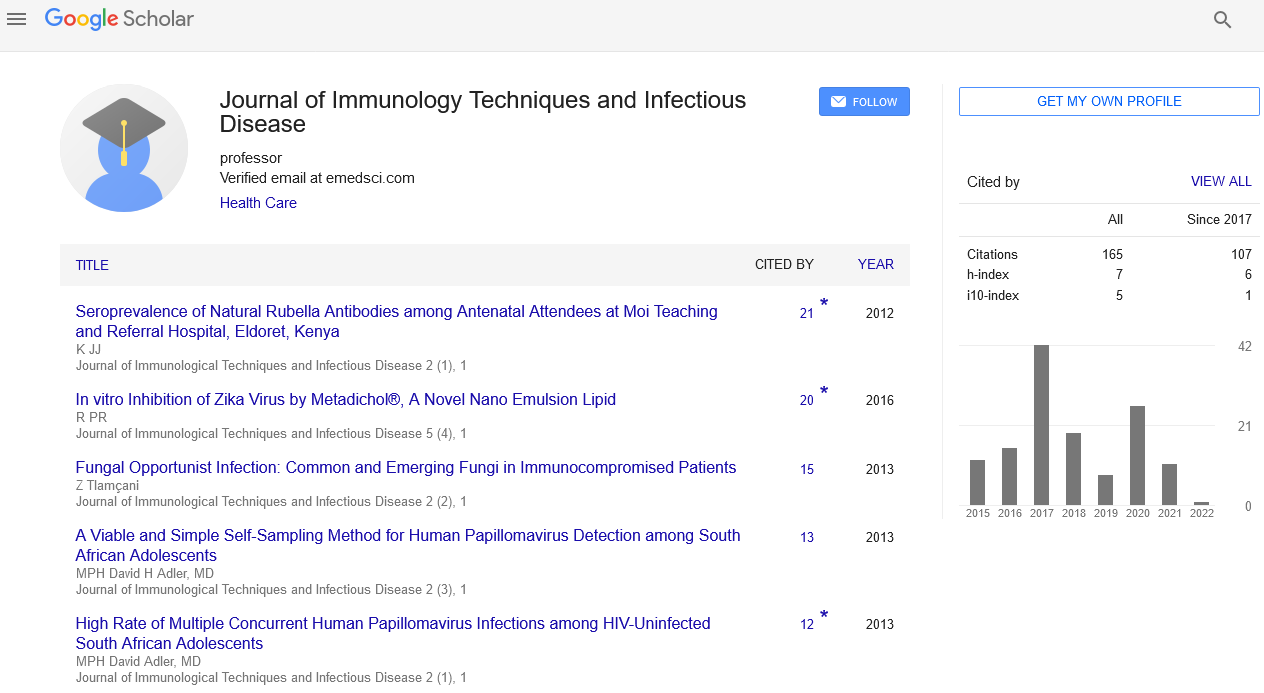Value and limits of modern imaging techniques in the evaluation of fibrosis leading to Atrial Fibrillation
Guy Hugues Fontaine
HDR Hôpital de la Salpêtrière, France
: J Immunol Tech Infect Dis
Abstract
A group from Paris has attempted to demonstrate a link between fat in the epicardium of atrial tissue to the production of fibrosis as a possible mechanism of atrial fibrillation (AF). In their discussion and conclusion the authors admit that the mechanism of AF is not completely understood. After an excellent review of the CMR techniques available for the identification of fat, fibrosis and water in the heart, they note a lack of spatial resolution of modern imaging techniques that result in their performing ex vivo CMR on two hearts. This However, the modern digital microscope has an optimal resolution which could enable a more precise interpretation of the pathophysiology of AF. The knowledge accumulated from my study of the histology of ARVD of the right ventricle from 73 patients clearly shows the topographic structure of fat, fibrosis and possible superimposed myocarditis. The atrial structure of the so-called “normal heart” is similar to that observed on the free wall of the right ventricle in ARVD. In addition to epicardial fat, there is fibrosis of two forms, interstitial fibrosis which can be the result of the genetic disorder of the disease or, replacement fibrosis which may be the result of myocarditis generally starting from the epicardium (epicardial-myocarditis as it is known by clinicians). A superimposed myocarditis may have a spectrum of presentation from the fulminant form leading to acute heart failure and death in a few days associated with invasion of both ventricles and atria by lymphocytes to that of a completely healed hyaline fibrosis. There may be intermediate aspects of myocarditis with a variable number of clusters of lymphocytes inside strands of fibrosis called the chronic-active form. Also, there may be a genetic factor now considered to be of increasing importance in the understanding of ventricular cardiomyopathies. In the background of atrial fibrillation these cardiomyopathies can be present but quiescent without arrhythmias in the general population. There can be additional complexity if we consider that myocarditis alone can cause fibrosis and adipocytes. Therefore, myocarditis can produce an arrhythmogenic substrate. In addition, the acute form can be a trigger of arrhythmias associated with an increase of CRP .The same gene that is responsible for the problem in atrial development can also explain the increased susceptibility of these hearts to be affected by myocarditis in a single or in multiple episodes by entero and adeno viruses. Therefore, the prevention or treatment of lone atrial fibrillation may be due to two targets: protection against and/or suppression of viruses and prevention of fibrosis. In the future, the ideal approach to prevention of atrial fibrillation will be the modification of the human genome using the genetic approaches such as the CRISPRcas9. Finally, the results obtained in the treatment of atrial fibrillation may be expanded to the treatment of the whole heart since the atrium and ventricle are two parts of the same embryologic structure as has been recently confirmed by the finding of “atrial dysplasia” A simple new tool to evaluate patients at risk of atrial fibrillation and to follow the effect of treatment should be the use of the new 16 lead high definition ECG recorder.
Biography
Guy Hugues Fontaine has made 15 original contributions at the inception of cardiac pacemakers in the mid-60s. He has identified ARVD as a side work during the beginning of antiarrhythmic surgery in the late 70s. He has published more than 860 scientific papers including 197 book chapters. He was the reviewer of 17 journals both in clinical and basic Science. He has also served for 5 years as a Member of the Editorial Board of Circulation. He has been invited to give 11 master’s lectures of 90 minutes each during three weeks in the top universities of China (2014).
 Spanish
Spanish  Chinese
Chinese  Russian
Russian  German
German  French
French  Japanese
Japanese  Portuguese
Portuguese  Hindi
Hindi 
